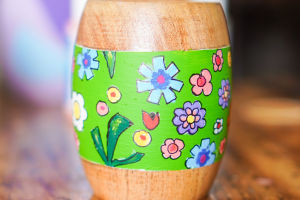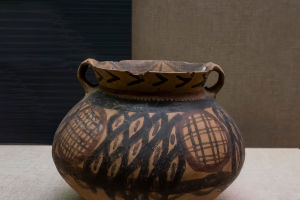
Unearthing The Evolution

Pottery, one of humanity's oldest crafts, has a rich and diverse history that extends far beyond the borders of China. While Chinese pottery holds a significant place in the annals of ceramic artistry, the development of pottery across the world showcases a tapestry of innovation, cultural exchange, and artistic expression.
From the ancient civilizations of Mesopotamia to the vibrant traditions of Native American pottery, let's embark on a journey through time and space to explore the fascinating history of pottery.
The birth of pottery can be traced back to around 10,000 BCE when early humans transitioned from a nomadic lifestyle to settled agricultural communities. In regions such as the Middle East, the advent of pottery marked a pivotal moment in human history. The earliest known pottery vessels were simple clay containers shaped by hand and fired in open fires or rudimentary kilns. These vessels served essential functions in storing food, water, and other goods, revolutionizing daily life and enabling the emergence of complex societies.
Related
 Driven by the vintage trend, the popularity of Scandinavian-originated antique-style furniture has not diminished in recent years.
Driven by the vintage trend, the popularity of Scandinavian-originated antique-style furniture has not diminished in recent years.
 When night falls, an exquisite mosaic light is definitely the most charming scenery.
When night falls, an exquisite mosaic light is definitely the most charming scenery.
 Music contributes to the development of the brain.
Music contributes to the development of the brain.
 It has long been believed that drawing helps to improve memory.
It has long been believed that drawing helps to improve memory.
 Colored pottery, a dream world depicted by artisans in prehistoric times, is also a monument in the history of human art.
Colored pottery, a dream world depicted by artisans in prehistoric times, is also a monument in the history of human art.
 Today, as times continue to evolve, art forms are becoming more and more diverse.
Today, as times continue to evolve, art forms are becoming more and more diverse.
As civilizations flourished across the globe, pottery became not only a utilitarian necessity but also a canvas for artistic expression. In ancient Egypt, pottery played a central role in funerary practices, with elaborate vessels and figurines accompanying the deceased into the afterlife. Egyptian artisans mastered the art of pottery, producing exquisite pieces adorned with intricate designs and hieroglyphics that provided insights into their beliefs and culture.
Meanwhile, in the Indus Valley civilization of South Asia, pottery production reached new heights of sophistication. Excavations at sites such as Harappa and Mohenjo-Daro have revealed a diverse array of pottery forms, including wheel-thrown vessels decorated with geometric patterns and animal motifs. The craftsmanship displayed in Indus Valley pottery suggests a highly organized society with advanced technological capabilities.

In Europe, the ancient Greeks elevated pottery to an art form, with renowned pottery centers such as Athens and Corinth producing exquisite ceramic wares prized for their elegance and craftsmanship. Greek pottery encompassed a wide range of forms, from utilitarian vessels like amphorae and kraters to finely painted vases depicting mythological scenes and everyday life. These vessels not only served practical purposes but also served as status symbols and commemorative gifts.
Across the Atlantic, the indigenous peoples of the Americas developed their own distinct pottery traditions, each reflecting the unique cultural heritage of their respective civilizations. In Mesoamerica, civilizations such as the Maya and the Aztecs crafted pottery vessels adorned with intricate designs and symbols, often used in sacred rituals and ceremonies. In North America, tribes such as the Pueblo Indians of the American Southwest and the Iroquois of the Northeast honed their pottery-making skills, creating functional vessels decorated with stylized motifs and symbols.
The history of pottery is also intertwined with trade and cultural exchange, as evidenced by the Silk Road, the ancient network of trade routes connecting East and West. Along these routes, pottery served not only as commodities for exchange but also as carriers of cultural ideas and artistic techniques. The influence of Chinese pottery, particularly during the Tang and Song dynasties, spread far and wide, inspiring potters in distant lands to experiment with new forms and glazing techniques.
As people journey through the annals of history, it becomes clear that pottery is not merely a utilitarian craft but a testament to the ingenuity, creativity, and cultural diversity of humanity. From the ancient civilizations of Mesopotamia and Egypt to the vibrant traditions of Greece, Mesoamerica, and beyond, pottery continues to captivate people’s imagination and connect people to the shared heritage. In a world where technology reigns supreme, the ancient art of pottery serves as a timeless reminder of the enduring relationship with the earth and the enduring legacy of human creativity.